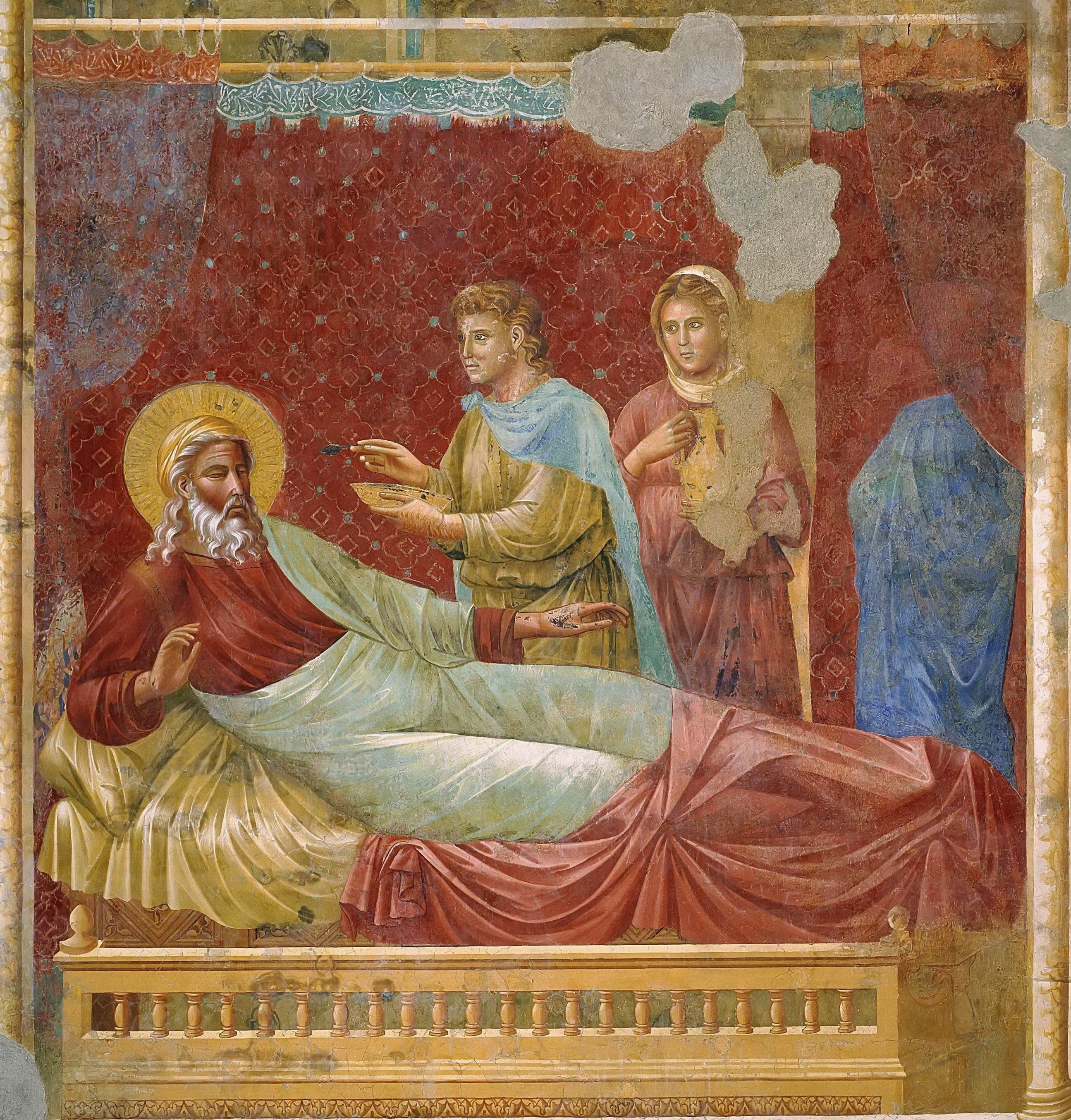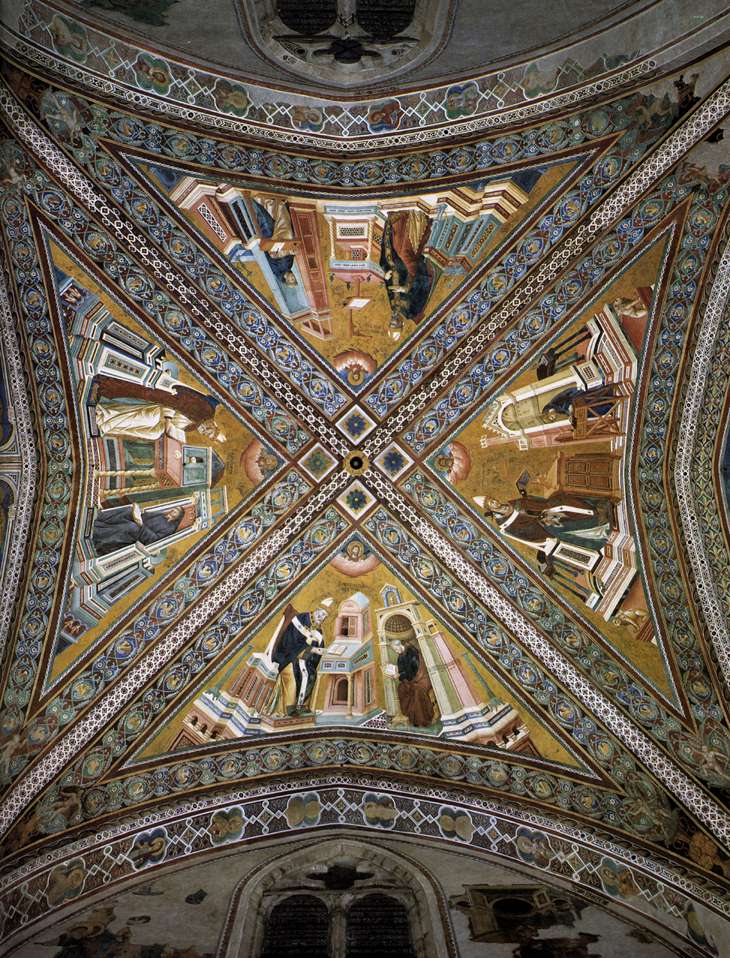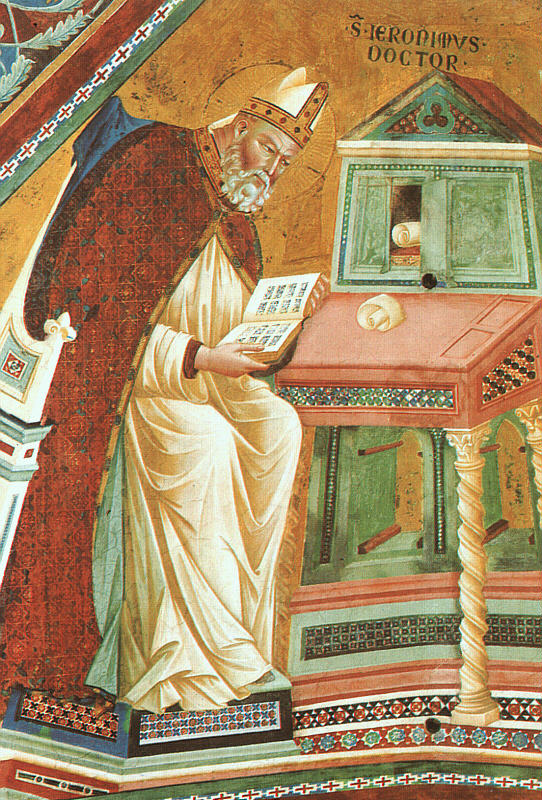Master Of Isaac on:
[Wikipedia]
[Google]
[Amazon]
 The Isaac Master was an Italian
The Isaac Master was an Italian
 The Isaac Master has been attributed with a historic series of artworks on the Old Testament in the Basilica of Saint Francis of Assisi, dated 1291–1295, among which are the following:
* '
* '
* '
* '
* '
* ' (in large part destroyed by the
The Isaac Master has been attributed with a historic series of artworks on the Old Testament in the Basilica of Saint Francis of Assisi, dated 1291–1295, among which are the following:
* '
* '
* '
* '
* '
* ' (in large part destroyed by the
 The Isaac Master, for his elevated technical level, is considered one of the first Italian Gothic painters, distant from the painters of his age. Much discussion has been held as to who the Master was. Some speculate that he was Gaddo di Zanobi Gaddi (due to similarity with Gaddi's work in Rome and Florence), while others say Pietro Cavallini,
The Isaac Master, for his elevated technical level, is considered one of the first Italian Gothic painters, distant from the painters of his age. Much discussion has been held as to who the Master was. Some speculate that he was Gaddo di Zanobi Gaddi (due to similarity with Gaddi's work in Rome and Florence), while others say Pietro Cavallini,  For many decades, the traditional attribution of the frescoes of the ''Vita di San Francesco'' in the Upper Basilica has been questioned, particularly by English art historians like Rintelen, Oertel, or Meiss. Italian scholars, however, remain mostly convinced by Vasari's attribution of the frescoes to Giotto. The recent conservation by after the
For many decades, the traditional attribution of the frescoes of the ''Vita di San Francesco'' in the Upper Basilica has been questioned, particularly by English art historians like Rintelen, Oertel, or Meiss. Italian scholars, however, remain mostly convinced by Vasari's attribution of the frescoes to Giotto. The recent conservation by after the
 The Isaac Master was an Italian
The Isaac Master was an Italian Gothic
Gothic or Gothics may refer to:
People and languages
*Goths or Gothic people, the ethnonym of a group of East Germanic tribes
**Gothic language, an extinct East Germanic language spoken by the Goths
**Crimean Gothic, the Gothic language spoken b ...
painter active in the decoration of the Basilica of San Francesco d'Assisi
The Basilica of Saint Francis of Assisi ( it, Basilica di San Francesco d'Assisi; la, Basilica Sancti Francisci Assisiensis) is the mother church of the Roman Catholic Order of Friars Minor Conventual in Assisi, a town in the Umbria region in ce ...
in Assisi
Assisi (, also , ; from la, Asisium) is a town and ''comune'' of Italy in the Province of Perugia in the Umbria region, on the western flank of Monte Subasio.
It is generally regarded as the birthplace of the Latin poet Propertius, born aroun ...
at the end of the thirteenth century. Master's name is derived from a fresco
Fresco (plural ''frescos'' or ''frescoes'') is a technique of mural painting executed upon freshly laid ("wet") lime plaster. Water is used as the vehicle for the dry-powder pigment to merge with the plaster, and with the setting of the plaste ...
painting of the death of Isaac
Isaac; grc, Ἰσαάκ, Isaák; ar, إسحٰق/إسحاق, Isḥāq; am, ይስሐቅ is one of the three patriarchs of the Israelites and an important figure in the Abrahamic religions, including Judaism, Christianity, and Islam. He was the ...
for which he is known, the fresco is located in the Upper Church of St Francis at Assisi, depicting Isaac blessing Jacob and Esau
The biblical Book of Genesis speaks of the relationship between fraternal twins Jacob and Esau, sons of Isaac and Rebecca. The story focuses on Esau's loss of his birthright to Jacob and the conflict that ensued between their descendant nations ...
.
The frescoes
 The Isaac Master has been attributed with a historic series of artworks on the Old Testament in the Basilica of Saint Francis of Assisi, dated 1291–1295, among which are the following:
* '
* '
* '
* '
* '
* ' (in large part destroyed by the
The Isaac Master has been attributed with a historic series of artworks on the Old Testament in the Basilica of Saint Francis of Assisi, dated 1291–1295, among which are the following:
* '
* '
* '
* '
* '
* ' (in large part destroyed by the 1997 Umbria and Marche earthquake
The 1997 Umbria and Marche earthquake occurred in the regions of Umbria and Marche, central Italy on the morning of September 26. It was preceded by a foreshock almost as strong as the main quake. The foreshock occurred at 02:33 CEST (00:33 UTC) ...
)
In the first two frescoes (depicting Isaac and Jacob and then Esau and Isaac), the setting is the same. Isaac lies blind on his death bed while another person (first Jacob, then Esau) reaches out to their father. A third setting is taken by Rebecca
Rebecca, ; Syriac: , ) from the Hebrew (lit., 'connection'), from Semitic root , 'to tie, couple or join', 'to secure', or 'to snare') () appears in the Hebrew Bible as the wife of Isaac and the mother of Jacob and Esau. According to biblical ...
that watches over, worrying over whether the deception of the exchange of brothers succeeds.
In both scenes, a heavy curtain closes the background to highlight the representation like a three-dimensional box. Each person's volume takes up space in the scene: an imagined architecture in asymmetrical relief makes an frame for the bed of Isaac, composing a solid parallelepiped
In geometry, a parallelepiped is a three-dimensional figure formed by six parallelograms (the term ''rhomboid'' is also sometimes used with this meaning). By analogy, it relates to a parallelogram just as a cube relates to a square. In Euclidea ...
. Interrupting the two scenes is an episode that depicts Isaac in the act of giving his blessing to Isaac. The curtain lifted by Rebecca forms folds that give more movement to the scene.
Identity
 The Isaac Master, for his elevated technical level, is considered one of the first Italian Gothic painters, distant from the painters of his age. Much discussion has been held as to who the Master was. Some speculate that he was Gaddo di Zanobi Gaddi (due to similarity with Gaddi's work in Rome and Florence), while others say Pietro Cavallini,
The Isaac Master, for his elevated technical level, is considered one of the first Italian Gothic painters, distant from the painters of his age. Much discussion has been held as to who the Master was. Some speculate that he was Gaddo di Zanobi Gaddi (due to similarity with Gaddi's work in Rome and Florence), while others say Pietro Cavallini, Arnolfo di Cambio
Arnolfo di Cambio (c. 1240 – 1300/1310) was an Italian architect and sculptor. He designed Florence Cathedral and the sixth city wall around Florence (1284–1333), while his most important surviving work as a sculptor is the tomb of Cardin ...
, or Giotto
Giotto di Bondone (; – January 8, 1337), known mononymously as Giotto ( , ) and Latinised as Giottus, was an Italian painter and architect from Florence during the Late Middle Ages. He worked during the Gothic/Proto-Renaissance period. Giot ...
.
The Master seems to have been familiar with the Roman
Roman or Romans most often refers to:
*Rome, the capital city of Italy
*Ancient Rome, Roman civilization from 8th century BC to 5th century AD
*Roman people, the people of ancient Rome
*''Epistle to the Romans'', shortened to ''Romans'', a letter ...
artists Filippo Rusuti and Jacopo Torriti, as well as with the Tuscan artists Cimabue and Duccio
Duccio di Buoninsegna ( , ; – ) was an Italian painter active in Siena, Tuscany, in the late 13th and early 14th century. He was hired throughout his life to complete many important works in government and religious buildings around Italy. Ducc ...
. In his depictions of volume and dimension, he anticipates some of the advances made by Giotto in his work by about a decade; for this reason, he is considered to be a central figure in the . These features also contribute to the theory that he was an artist at the peak of his career or a student of Cimabue, perhaps a very young Giotto.
 For many decades, the traditional attribution of the frescoes of the ''Vita di San Francesco'' in the Upper Basilica has been questioned, particularly by English art historians like Rintelen, Oertel, or Meiss. Italian scholars, however, remain mostly convinced by Vasari's attribution of the frescoes to Giotto. The recent conservation by after the
For many decades, the traditional attribution of the frescoes of the ''Vita di San Francesco'' in the Upper Basilica has been questioned, particularly by English art historians like Rintelen, Oertel, or Meiss. Italian scholars, however, remain mostly convinced by Vasari's attribution of the frescoes to Giotto. The recent conservation by after the 1997 Umbria and Marche earthquake
The 1997 Umbria and Marche earthquake occurred in the regions of Umbria and Marche, central Italy on the morning of September 26. It was preceded by a foreshock almost as strong as the main quake. The foreshock occurred at 02:33 CEST (00:33 UTC) ...
shed new light on the debate. Zanardi supported the opinion of Federico Zeri
Federico Zeri (12 August 1921 – 5 October 1998) was an Italian art historian specialised in Italian Renaissance painting. He wrote for the Italian newspaper '' La Stampa'', and was a well known television-personality in Italy.
Zeri was born i ...
that thought the frescoes executed by a painting of the Roman school, perhaps Pietro Cavallini, the only great Gothic painter not confirmed to have contributed to the basilica, or his contemporaries Filippo Rusuti and Jacopo Torriti.
The frescoes are close to both Cavallini's techniques and his saturated and warm color palette: they are similar to his frescoes at Santa Cecilia in Trastevere
Santa Cecilia in Trastevere is a 5th-century church in Rome, Italy, in the Trastevere rione, devoted to the Roman martyr Saint Cecilia (early 3rd century AD).
History
The first church on this site was founded probably in the 3rd century, by Pop ...
. Still, the accepted attribution is still to Giotto or, less often, Arnolfo di Cambio
Arnolfo di Cambio (c. 1240 – 1300/1310) was an Italian architect and sculptor. He designed Florence Cathedral and the sixth city wall around Florence (1284–1333), while his most important surviving work as a sculptor is the tomb of Cardin ...
.
References
Bibliography
* * {{DEFAULTSORT:Isaac Master 13th-century Italian painters Anonymous artists Umbrian painters